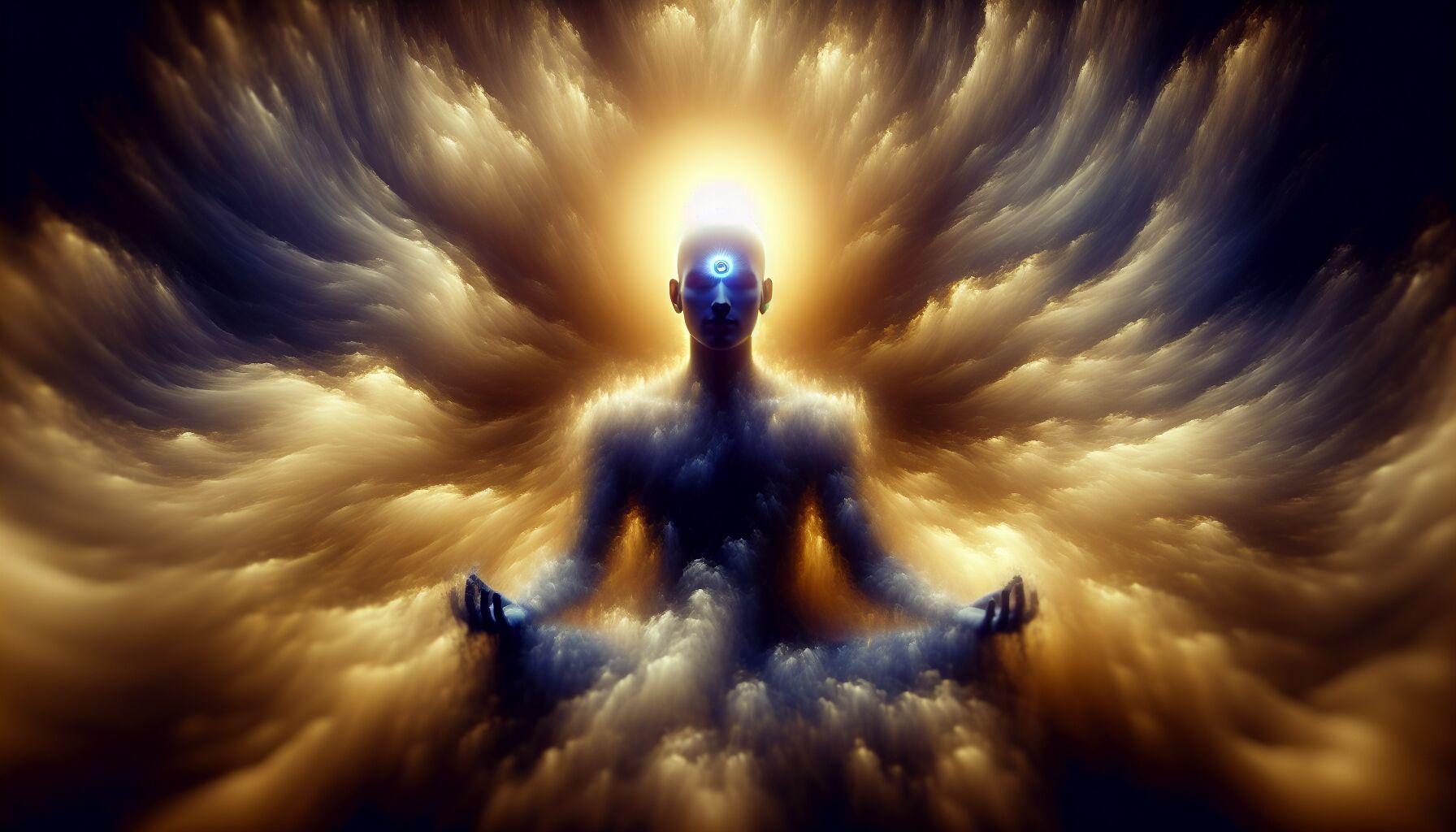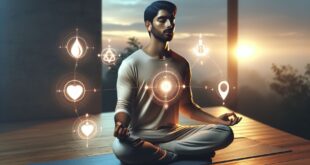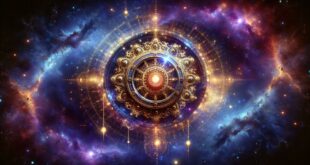 Some call it the gateway to deeper perception; others see it as a mystical organ buried within the human consciousness. The third eye has fascinated seekers for centuries, appearing in spiritual traditions across cultures. But what exactly is it? And why does it carry such weight in discussions of awareness, intuition, and inner peace?
Some call it the gateway to deeper perception; others see it as a mystical organ buried within the human consciousness. The third eye has fascinated seekers for centuries, appearing in spiritual traditions across cultures. But what exactly is it? And why does it carry such weight in discussions of awareness, intuition, and inner peace?
At its core, the third eye represents an intuitive lens—one that allows individuals to perceive beyond the ordinary. Located in the center of the forehead, just above the space between the eyebrows, this energetic powerhouse is linked to the pineal gland. Interestingly, ancient texts from Hinduism and Buddhism align this invisible eye with the Ajna chakra, the energy center associated with wisdom, perception, and clarity. In Western esoteric traditions, it’s often tied to visionary experiences and deep meditative states. But regardless of the framework, the theme remains the same: the third eye is a bridge between the physical and the unseen—a tool for true insight.
Physically, the pineal gland is a small, pea-shaped structure in the brain governing circadian rhythms and melatonin production. But historical mystics believed it was more than a biological regulator; they saw it as the key to accessing what some call the higher self, that intuitive knowing untouched by ego, fear, or mundane distractions. The philosopher René Descartes even called the pineal gland the “seat of the soul,” hinting at its greater significance beyond its anatomical function.
So, why does this matter? Because strengthening your connection to this intuitive center can shift perception in dramatic ways. You may notice sharper instincts, deeper introspection, or even an enhanced sense of creativity. Think of it like tuning a radio—when static fades, clarity emerges. Great thinkers and philosophers throughout history have hinted at this idea. As Carl Jung famously said, “Your vision will become clear only when you look into your own heart.” That’s the essence of awakening the third eye—peering beyond surface reality and refining your inner sight.
Interestingly, modern science has started catching up with ancient wisdom. Studies on meditation and brain function show that regular mindful practice increases activity in the frontal lobe, the part of the brain responsible for awareness and decision-making. Many yogic practices focus on third-eye activation through breath control and visualization. Even chakra healing methods, like energy work or Reiki, emphasize balancing the Ajna chakra to clear mental fog and enhance spiritual clarity.
Some might wonder—if the third eye is so powerful, why don’t more people experience its effects naturally? Well, in many ways, it’s like an unused muscle. Without attention, it remains dormant. Cultural conditioning also plays a role; a society focused on external validation and material success often overlooks the importance of inner exploration. And let’s be honest—when was the last time formal education encouraged deep intuition over analytical reasoning?
That’s where intentional practice comes in. Awakening the third eye isn’t just for mystics or monks—it’s a skill anyone can cultivate. Whether it’s quiet contemplation, visualization exercises, or simple awareness of one’s thoughts, small steps can open doors to greater clarity. After all, as Leonardo da Vinci once wrote, “Learn how to see. Realize that everything connects to everything else.” And when the third eye begins to stir, those connections become far more vivid.
Techniques to awaken and strengthen your third eye
If you’ve ever had a gut feeling that turned out to be right, you’ve already had a taste of what an awakened third eye can offer. Developing this deeper sense of awareness isn’t about gaining supernatural powers—it’s about refining perception and quieting the noise that drowns out intuition. So how do you tune in? A few time-tested techniques can help strengthen your inner vision and bring clarity to your spiritual path.
Meditation: The Backbone of Inner Sight
At the heart of most third-eye practices is meditation. Think of it like sharpening a lens—each session polishes away mental clutter, allowing your higher self to emerge. While any form of mindful meditation will help, those specifically targeting the Ajna chakra can be particularly effective.
A simple starting point is focused breathing. Sit comfortably, close your eyes, and gently direct your attention to the space between your eyebrows. Imagine a deep indigo light swirling there, expanding with each inhale and settling with each exhale. If your mind wanders, that’s normal. Just bring it back—again and again. Over time, consistency transforms restlessness into clarity.
Some meditators incorporate mantras to reinforce focus. A classic example is the chant “Om”, believed to resonate with the Ajna chakra’s frequency. Repeating it aloud or internally creates subtle vibrations, helping peel away mental fog. If that feels too abstract, try using an affirmation instead—something like, “I trust my inner wisdom. I see beyond the surface.” Words carry power, shaping thought patterns that influence perception.
And for those who struggle with traditional meditation? Guided visualizations offer an alternative path. Imagine standing in a vast, open space, a glowing orb hovering before you. Watch as it moves toward your forehead, dissolving into warmth and insight. Visualization engages the brain’s sensory regions, making abstract concepts feel more tangible—almost as if you’re practicing inner sight before actually seeing.
Nutrition and the Pineal Gland Connection
What you consume directly impacts the body—and by extension, the third eye. The pineal gland, often linked to mystical vision, functions best when it’s free from calcification (a hardening caused by certain environmental toxins). Some researchers argue that fluoride, commonly found in tap water and toothpaste, accelerates this calcification. Whether or not that’s entirely true, reducing fluoride intake and staying hydrated with clean, filtered water certainly doesn’t hurt.
Diet matters too. Dark purple foods—think blueberries, grapes, and eggplant—are often recommended for Ajna chakra healing, as they contain antioxidants that support cognitive function. Similarly, raw cacao (yes, real chocolate) is packed with magnesium and can enhance mental clarity. Spices like turmeric and ginger also help reduce bodily inflammation, benefiting overall energy flow.
Breathwork: A Fast-Track to Activation
Controlled breathing isn’t just about relaxation—it alters brainwaves, shifting consciousness into deeper states. One technique particularly effective for third-eye work is alternate nostril breathing (“Nadi Shodhana” in yogic tradition).
Here’s how to do it:
1. Place your right thumb over your right nostril and inhale deeply through the left.
2. Close the left nostril with your ring finger and exhale through the right.
3. Inhale through the right, then switch again, releasing through the left.
4. Repeat in a steady rhythm, keeping the breath smooth and intentional.
This method balances the brain’s hemispheres—logic and intuition, reason and creativity—creating the right internal conditions for expanded awareness. Some practitioners report mild tingling near the forehead after just a few rounds, a sign that energy flow is shifting toward the third eye.
The Power of Darkness and Silence
Here’s something fascinating—the pineal gland thrives in darkness. Ancient seers would retreat into caves for prolonged meditation, harnessing sensory deprivation to enhance inner sight. While total isolation isn’t practical for most, spending time in dim lighting or meditating just before sleep can stimulate third-eye activity.
Another overlooked factor? Silence. In a world constantly buzzing with notifications and distractions, true quiet is rare. But the less external noise you absorb, the more you can detect the subtle whispers of intuition. Try unplugging from screens an hour before bed and sitting in stillness. It may feel strange at first, but with patience, insights begin surfacing in ways that are hard to ignore.
Crystals, Sound Frequencies, and Energy Work
For those drawn to tactile tools, certain crystals are believed to amplify third-eye energy. Amethyst, labradorite, and lapis lazuli have long been associated with intuition and vision. Holding them during meditation or placing one on the forehead can serve as a physical anchor for focus.
Sound frequency also plays a role. Binaural beats, particularly in the 432 Hz to 963 Hz range, are said to enhance meditative states and stimulate the Ajna chakra. Plug in some headphones, close your eyes, and let the vibrations do their work—it’s an effortless way to shift awareness.
And then there’s energy healing. Practices like Reiki or chakra balancing aim to remove energetic blockages, restoring flow where stagnation lingers. Even
Common challenges and how to overcome them
 Somewhere along the path of awakening the third eye, obstacles tend to appear—sometimes subtle, sometimes glaringly obvious. It’s a bit like trying to tune a radio to a new frequency. At first, all you get is static. Doubts creep in, distractions pull your focus, and frustration mounts when the clarity you expected remains elusive. But here’s the thing: these roadblocks are part of the process. They aren’t signs of failure; they’re invitations to refine your approach.
Somewhere along the path of awakening the third eye, obstacles tend to appear—sometimes subtle, sometimes glaringly obvious. It’s a bit like trying to tune a radio to a new frequency. At first, all you get is static. Doubts creep in, distractions pull your focus, and frustration mounts when the clarity you expected remains elusive. But here’s the thing: these roadblocks are part of the process. They aren’t signs of failure; they’re invitations to refine your approach.
One of the most common hurdles is self-doubt. The mind, conditioned by years of skepticism and logical reasoning, resists anything that doesn’t fit into a neatly defined, scientific framework. You might wonder, Am I imagining all of this? Is this even real? That’s normal. Spiritual development often challenges conventional thought, and intuition, by its nature, isn’t something that can be measured with a ruler. The trick is allowing yourself to trust your inner experience without needing immediate proof. As Albert Einstein put it, “The only real valuable thing is intuition.”
A related struggle is mental chatter—the constant stream of thoughts that makes it difficult to quiet the mind. If you’ve ever sat down to meditate only to be bombarded by grocery lists, past arguments, or random childhood memories resurfacing, you’re not alone. The brain, like an overactive puppy, tends to wander. This is why simple breathwork or mantra repetition can be so helpful. When your focus drifts, gently returning to your breath or the vibration of a spoken word—like Om—helps anchor attention and eases the mental noise over time.
And then there’s physical tension, especially around the forehead. Some people report feeling heaviness or pressure near the third eye when they start working with it. This isn’t necessarily a bad thing—it’s often a sign that energy is beginning to stir in that area. But if it becomes uncomfortable, grounding practices can help. Try placing your bare feet on the earth, eating root vegetables, or practicing a simple body scan meditation to balance out the sensation.
Environmental factors also play a role. The pineal gland, the tiny organ linked to the third eye, is particularly sensitive to toxins like fluoride and artificial light exposure. Reducing processed foods, drinking pure water, and giving yourself occasional breaks from screens—especially before bed—can support healthier function. Some practitioners even experiment with chakra healing, using energy-based approaches like Reiki or sound therapy to recalibrate imbalances.
Then there’s the challenge of over-expectation. Many people assume that a fully awakened third eye will bring grand visions, mystical encounters, or immediate life-altering realizations. In reality, it’s often far subtler. Maybe it’s a sharpened intuition—the ability to read a situation with uncanny accuracy. Perhaps it’s noticing synchronicities more frequently, or sensing emotions more deeply. The key isn’t chasing specific outcomes but staying present to however the experience unfolds.
And finally, a lesser-discussed challenge: fear of what you might see. Expanding perception means confronting more than just beauty and wisdom—it also means facing inner shadows. Unresolved emotions or deep-seated fears may surface, and that can be unsettling. But avoidance only keeps the block in place. Working through it—whether through journaling, therapy, or mindful acceptance—allows your higher self to step forward, untangling what holds you back.
Truth is, every challenge along this path is an invitation. A moment to pause, adjust, and continue forward. The third eye isn’t something you “achieve”—it’s something you continuously learn from, expanding your awareness in ways both extraordinary and profoundly simple. And the more you persist, the clearer the fog becomes.
 DS Haven In Light Of Things
DS Haven In Light Of Things






